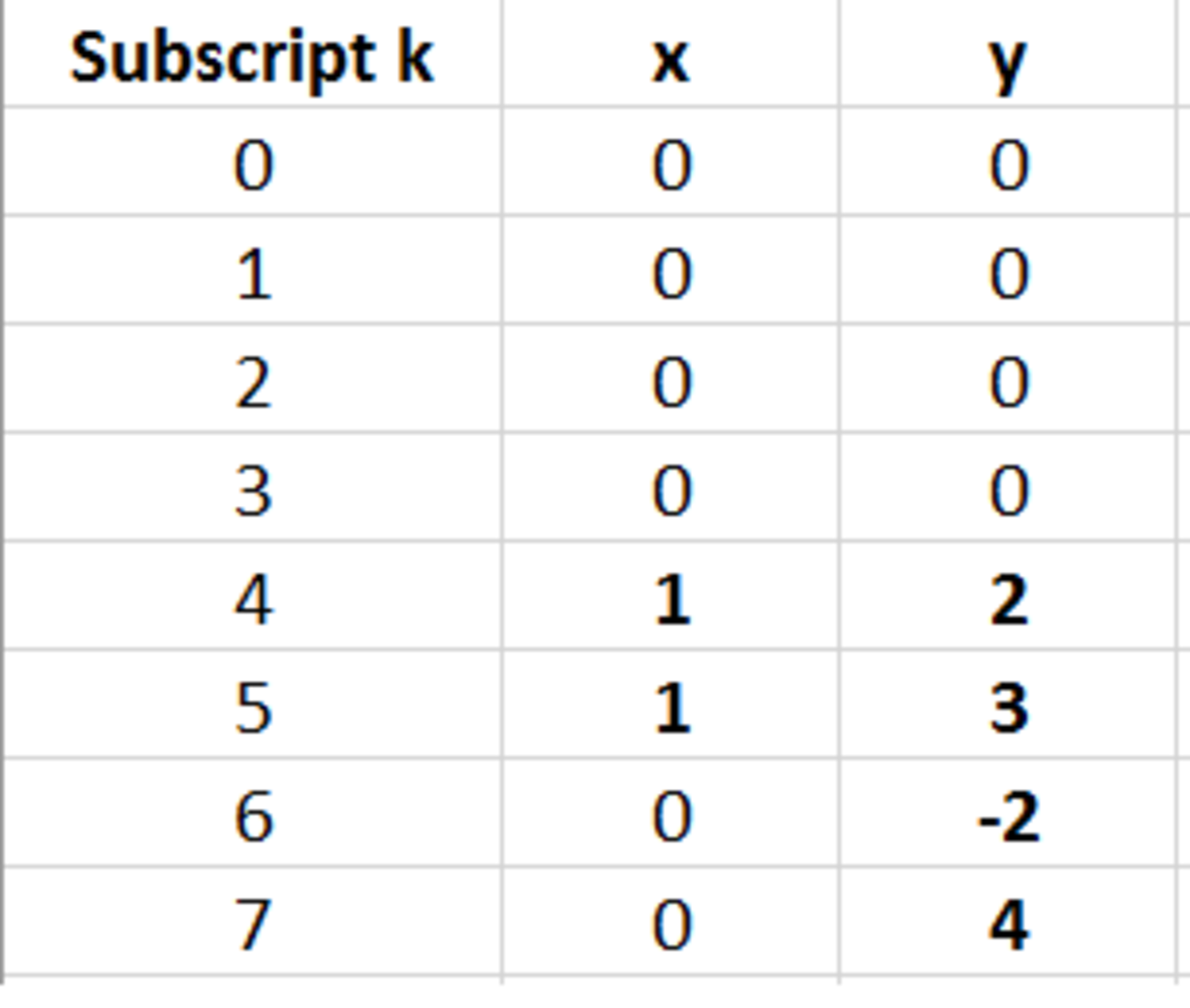Finding Filter Coefficients
A digital filter has an input and an output . The filter is implemented as shown below:
Some input / output data from the filter is given below:

What is ?
Note: denotes the most recent input to the filter, denotes the second-most recent input to the filter, etc.
The answer is 63.
This section requires Javascript.
You are seeing this because something didn't load right. We suggest you, (a) try
refreshing the page, (b) enabling javascript if it is disabled on your browser and,
finally, (c)
loading the
non-javascript version of this page
. We're sorry about the hassle.
(1)
y 4 = a x 4 + b x 3 + c x 2 + d x 1
2 = a ( 1 ) + b ( 0 ) + c ( 0 ) + d ( 0 )
a = 2
(2)
y 5 = a x 5 + b x 4 + c x 3 + d x 2
3 = a ( 1 ) + b ( 1 ) + c ( 0 ) + d ( 0 )
3 = a + b
Substituting the value of a, we get
b = 1
(3)
y 6 = a x 6 + b x 5 + c x 4 + d x 3
− 2 = a ( 0 ) + b ( 1 ) + c ( 1 ) + d ( 0 )
\(-2 = b + c)
Substituting the value of b, we get
\(c = -3\)
(4)
y 7 = a x 7 + b x 6 + c x 5 + d x 4
4 = a ( 0 ) + b ( 0 ) + c ( 1 ) + d ( 1 )
4 = c + d
Substituting the value of c, we get
d = 7
Therefore,
a 2 + b 2 + c 2 + d 2
= ( 2 ) 2 + ( 1 ) 2 + ( − 3 ) 2 + ( 7 ) 2
= 6 3